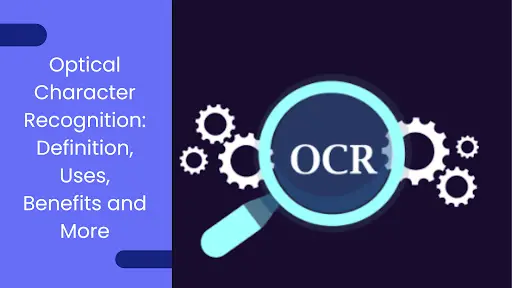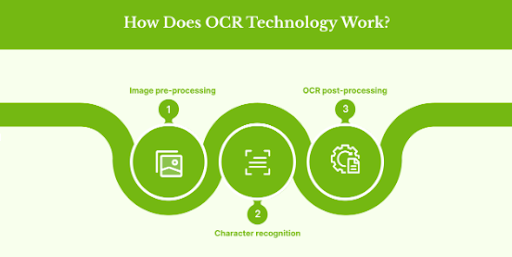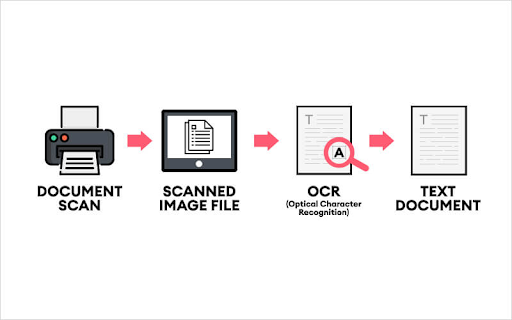OCR, or Optical Character Recognition, is an amazing technology. It is one of the cornerstones of human-machine interactions, along with robotics and text-to-speech/speech-to-text systems.
It has plenty of uses for both individuals and organizations. Today, we are going to check out one specific use case of OCR: writing. Our main topic of discussion is how OCR impacts writing and what benefits it provides to writers in general.
So, let’s check them out.
What is OCR Exactly? A Quick Rundown
OCR is an advanced AI-based technology that recognizes and extracts text inside images. The new format is compatible with word processors, so the text becomes digitally editable.
Physicist Emanuel Goldberg initially introduced the concept of OCR through his statistical machinery in the late 1920s.
In modern OCR, you can upload an image containing text composed of alphabets, numbers, symbols, and special characters. The images can be in formats like JPG, PNG, JPEG, BMP, GIF, TIFF, or WEBP. The OCR tool will extract the characters from the image and transform them into a searchable, editable, and accessible form.
Modern OCR tools like ocronline.io can recognize different international languages, a variety of characters, and diverse handwriting, along with correcting grammar, tenses, and punctuation.
The following are the types of documents OCR tools can process:
- Printed text documents , including books, articles, newspapers, letters, invoices, and receipts.
- Official business documents, including invoices, agreements, contracts, financial records, and bank statements.
- Forms and applications like tax and registration forms, admission forms, request forms, and leave applications.
- Handwritten notes, including lecture notes, grocery lists, to-do lists, meeting minutes, project outlines, and personal letters.
- Identification documents, like driver's license, blood group card, passport, social security, health insurance, employee ID, and student ID.
- Multilingual documents involving user manuals, tourist brochures, immigration forms, and medical records.
- Documents with tables, images, and other graphics.
It is important to note that images of these documents are required for OCR to work.
How OCR Technology Works?
1. Image Processing
The OCR is equipped with scanners that initially scan and comprehensively read the file for clarity and prepare it for the next steps.
One of the most important steps of preprocessing is binarization. This is a process in which an image is edited such that the background becomes totally black while the text becomes white.
This makes it easier for the OCR system to recognize characters and letters against the contrasting background.
2. Extraction of Text
The extraction of text is done via one of two techniques: pattern matching or feature extraction. Here is a simple explanation of both.
- Pattern Matching. In this approach, the OCR tool tries to match the shapes of letters and symbols in the image with a database of known characters. This approach works well if the image has evenly spaced and highly defined characters, e.g., typed text in fonts like Times New Roman.
- Feature Extraction. In this approach, design features of characters are used to recognize characters instead of their actual shapes. So, the letter ‘P’ would be recognized by the fact that the top end of a relatively straight line is appended by a semicircle facing the right. This approach is slower but more accurate and can recognize text in bizarre and unconventional fonts.
3. Post Processing
Once the characters are easily changed from image to text in machine-readable form, the tool will now ensure that the user gets the result in an editable document form in Google Docs, PDF, or any other format. It also corrects grammatical, spelling, and punctuation mistakes.
Benefits of OCR in the Writing Process
OCR is undoubtedly one of the biggest innovations of the digital era, enabling users with accurate and smooth image-to-text experiences. Whether you are from the administration of a newly established startup or a multilingual student, OCR can not only help you simplify the process but can boost your efficiency and increase output.
Now, let’s take a quick look at the benefits of OCR in the writing process!
Easily Editable Documents
Changing any word, sentence, grammar, or mistake in physical documents is quite cumbersome. But OCR enables its users to quickly access a digital form of the documents, which can be easily edited.
Reduced Mistakes and Errors
Humans are prone to mistakes, regardless of extreme care and consideration. So, by using OCR Technology, you can reduce the chances of mistakes and errors in manual writing, including punctuation, spelling mistakes, tense problems, and grammatical errors, and make the writing process smooth and trouble-free.
Accuracy
Compared with manual typing and entry tasks, the writing process has been greatly transformed by OCR advancements. It increases the accuracy of the texts. Furthermore, the integration of Artificial Intelligence in OCR is making its accuracy up to the mark.
Conclusion: OCR is the New Normal of the Industry!
Making the switch from traditional old ways of documentation to advanced AI-based OCR technologies is needed in the modern era. From making the complex data extraction process easy and quick to support a wide variety of international languages, implementing OCR in your writing process is ultimately cost-effective, secure, and trouble-free.













